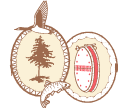Managing forestry development in Eeyou Istchee
Forests, their management and exploitation, have always been of key concern for the Crees, particularly for the southerly Cree communities located within the commercial development zone. These commercial operations present a challenge for the Cree Nation Government. Left unchecked, these activities can have undesirable impacts on the landscape, Cree traplines and on their ability to pursue an active Cree way of life.
Since the signing of the James Bay and Northern Quebec Agreement (JBNQA) in 1975, commercial forestry development has been regarded as an innocuous activity given the presumption that forests continually renew themselves. This is reflected in various ambiguous provisions within Section 22 of the JBNQA that exempt certain aspects of forestry operations (e.g. forestry roads) from the environmental assessment regime. For years, this ambiguous regard to commercial forestry led to the development of a multi-million-dollar forestry industry in Eeyou Istchee. At its height in the mid 1990s, forestry companies in the region were harvesting over 5 million cubic metres of timber from Cree traplines each year.


